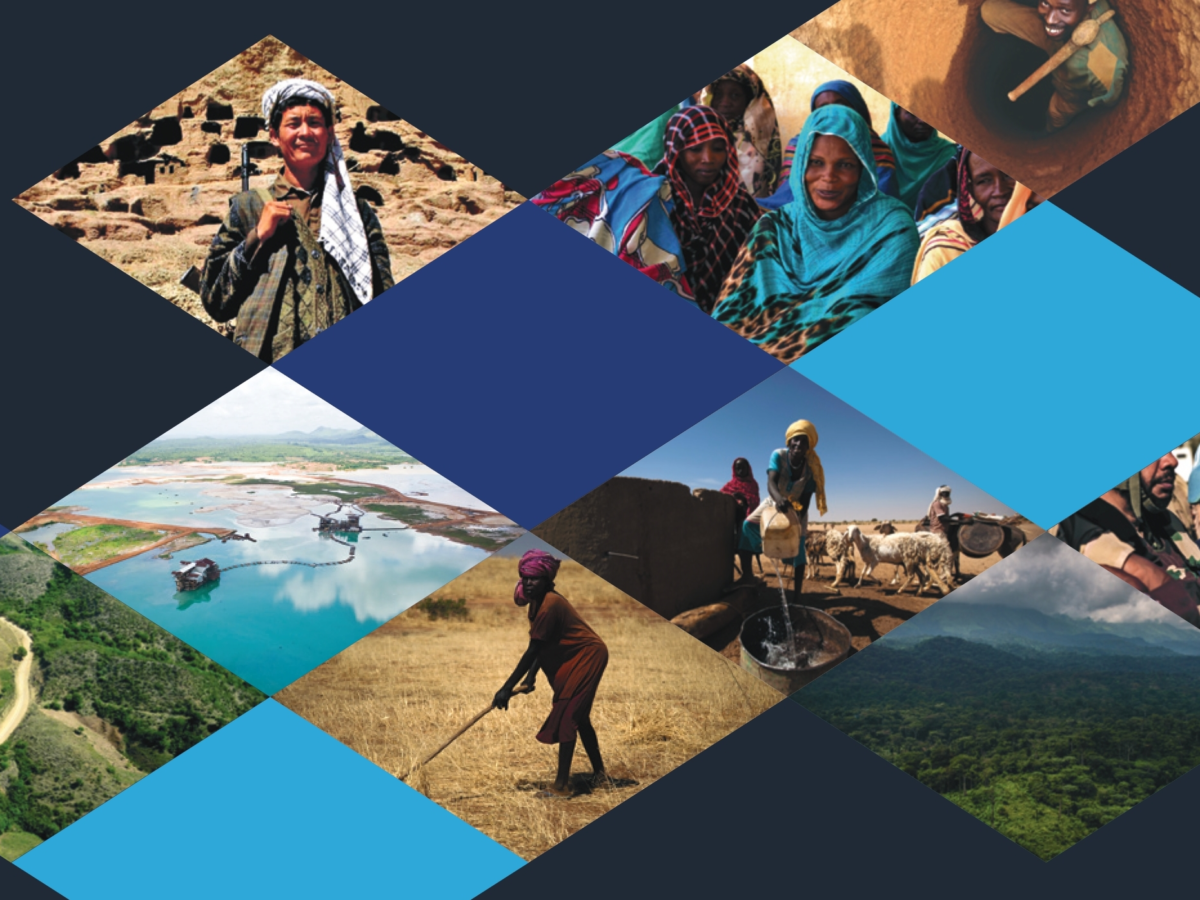
Post-Conflict UN Peacebuilding: the environment as a pathway towards a sustainable peace
Par Rachel GALETOUX
The interest in peacebuilding is quite recent, and its definition has not always been clear. Indeed, the UN only started emphasizing peacebuilding in recent reports, and especially in the New Agenda for Peace. It had already been defined in the Brahimi report on Peacekeeping Reform as “activities undertaken on the far side of conflict to reassemble the foundation of peace and provide tools for building on those foundations something that is more than just the absence of war”1; but it was never really a priority up until now. This definition clearly confines peacebuilding in a post-conflict setting, and links it to conflict prevention as it is seen as something made to address the causes of tensions and conflicts, be it root causes or more direct and short-term causes. This definition and perception make it that the same technologies that are used to help build peace after war are also technologies that can be used to help societies avoid war in the first place. Therefore, post-conflict peacebuilding and conflict prevention are really two faces of the same coin.
Furthermore, this definition of peacebuilding is very broad in scope. Indeed, as there are various causes of violence and conflict, there are just as many ways to interpret peacebuilding and act on it. Thus, every international assistance that addresses any grievance or probable source of tension can be called peacebuilding. The difficult thing with this broad definition is that the list of causes of conflict can be difficult to establish seeing the number of them, and therefore it can be difficult to act on these causes. Besides, it can also be difficult to find what causes peace, and thus to know on which cause to act or how.
Another thing to note is that because of this large definition, different agencies or international organizations can choose to act and prioritize different aspects of peacebuilding, depending on their competence but also on their interests. Indeed, many agencies choose to act according to their existing mandates and expertise, worldview and organizational interests, even if there is an emerging consensus on the UN definition of peacebuilding. Consequently, any international coordination and cooperation can be very difficult and depends on political interests and considerations.
Finally, even with all those definitions, it is possible to identify three dimensions of post-conflict peacebuilding according to the literature on the subject, and especially according to Michael Barnett, Hunjoon Kim, Madalene O’Donnell, and Laura Sitea in their chapter “Peacebuilding: What is in a name?”. The first and often most acted upon is the action to reinforce stability and discourage combatants from returning to war. This part of peacebuilding is most direct and short-term. The second aspect, often overlooked by organizations, is the restoration of key state functions and institutions, and the restoration of their legitimacy. Indeed, it is often overlooked as many agencies want to directly act on immediate or long-term demands and causes of conflicts. The last dimension is the attempt to build the state’s and most of all the society’s ability to manage conflict peacefully and to develop the socioeconomic infrastructure necessary to guarantee economic development in the country. This dimension of peacebuilding is the one that is oriented the most on the long-term and that addresses the root causes of tensions leading to conflicts in society.
Following that reasoning, the environment is a crucial part of this work. Indeed, it can be at the center of some major society inequalities and distensions, especially when it comes to the long-term effects of climate change or the management of natural resources. Considering that the environment can mean many different things, from natural resources, biodiversity or climate change and its consequences, it is evident that it can have some major long-term consequences on the lives of many people. Therefore, it can influence peace in many ways, by consolidating it or threatening it. Indeed, it can be acted upon and used to help create social cohesion, state capacity and legitimacy and a more sustainable and fair society, all this addressing root causes of violences and helping prevent a relapse into conflict. This is why it is an important aspect that must be taken into account to build a sustainable peace, for there can be no enduring peace without considering the impacts of climate and trying to mitigate them. Since peacebuilding is meant to prevent new conflicts from happening, it must consider several parameters that could spoil the newly established and fragile stability, including the environment. Moreover, the environment can also be a way to create cooperation and cohesion within a society, which is essential to a sustainable peace. This paper will thus analyze both how conflicts can be created by the environment and how it can be used to create state and social cohesion in some innovative ways.
The environment and conflicts: a driver towards violence
Many studies have recently been trying and succeeding in linking conflict and environment. So, if the environment was never really considered before, it is now increasingly part of reports and strategies to build and sustain peace. It holds an important place in the New Agenda for Peace, this report clearly stating the dire consequences of climate change and mismanagement of natural resources on a country’s stability. Furthermore, the Environmental Cooperation for Peacebuilding Programme has released an important report in 2016, assessing the place of the environment in the outbreak of tensions and conflicts, but also in peacebuilding possibilities and initiatives. One of the first things noted by reports is that inequalities are a major driver of conflict and that climate change tends to aggravate almost all existent inequalities, especially in terms of access to resources, which in turn can lead to economic or health injustices and destabilize a society. This explains why natural resources and climate change must be studied for their role in conflicts, and ultimately for their importance in peacebuilding. This approach is all the more important considering the UN’s new focus on long-term peacebuilding to avoid relapse into conflicts and violence, this new priority being clearly stated in the New Agenda for Peace or on several occasions by the UN Secretary General, Antonio Guterres.
Natural Resources and conflicts
One important aspect of the environment in conflicts is the distribution of natural resources. Indeed, in many countries, tensions emerge from competing groups of population for resources, be it essential resources like water or lands or extractive resources. For instance, from 1950 to 2010, at least 40% of all intrastate conflicts were linked to natural resources2, be it extractive ones or scarce livelihood ones such as fertile lands and water. This shows that when resources are poorly distributed, or when they are monopolized by a small group of population, tensions will inevitably emerge in the long run, and peace cannot last in these conditions. For instance, we can study the case of Afghanistan. Indeed, Afghanistan’s natural resources are a major determinant of peace and stability for over 70 to 80% of Afghan rely on agriculture and animals for their daily survival3, and the potential for mineral wealth in Afghanistan is very high, which can explain an intense competition over these resources.
Central Highlands, Afghanistan – Source: UNEP
This is why many studies, including the one from the Environmental Cooperation for Peacebuilding (ECP) Programme, can affirm that natural resources are a major source of conflict in the region. This is even more the case concerning water because of a problem in its distribution and division at local and transboundary levels. There are also multiple land ownership disputes reinforced by the dependency of Afghans on agriculture, and disputes over the smuggling of high value timber. Therefore, natural resources play a major role here in creating, or reinforcing conflicts within the population and the different groups in it.
An interesting case is also that of the Central African Republic, where natural resources are considered as major peace spoilers. This illustrates what George Downs and Stephen Stedman studied in the chapter “Evaluating Issues in Peace Implementation” of their work Ending Civil Wars: The Implementation of Peace Agreements. Indeed, in their analysis, access to natural resources by warring parties can make the implementation of peace difficult and these resources also facilitate a relapse into conflict. This analysis can be backed by the conclusion of the ECP Programme report, stating that since 1990, over 18 violent conflicts have been partially financed by the exploitation of natural resources4. This report also draws the conclusion that “conflicts associated with natural resources are more likely to relapse into conflict in the first five years after a peace agreement has been signed”.5 In the case of Central Africa, it is one of the poorest countries in the world and is highly dependent on natural resources such as timber, diamonds or arable land. The problem here is that this dependence is coupled with poor governance and corruption, insecurity and violences, numerous inequalities, and a sense of marginalization of some regions. Here, natural resources fuel the risk of conflict by financing violences and generating claims and jealousy between different parts of the population. In the case of the financing of conflict, this plays an important role in the duration of peace as some actors can conclude that they would gain more by exploiting and selling resources during a conflict than during peace, thus encouraging the creation of violent conflicts and hampering peace. Therefore, peace in the country can only be fragile as long as natural resources cannot be handled and managed properly and fairly, either by strong and transparent institutions, or by a strong and equitable private sector. This is why natural resources must be taken into account when working on peacebuilding, otherwise the risk of relapse in a conflict is much higher.
Climate change and its effect on natural resources
Another aspect linked to natural resources but also a consequence of climate change is the scarcity of some resources such as arable lands and most of all water. Indeed, climate change and particularly global warming provoke in some parts of the globe an intense desertification, which leads to the decrease of available lands for agriculture and of water resources. This scarcity can be a major problem in the regions where people rely mainly on agriculture or in regions that are already very dry, threatening the very survival of some populations. For instance, in the African Great Lakes Region, according to the ECP Programme Report, demographic trends, increasing resource consumption, environmental degradation and climate change provoke a very high and unsustainable pressure on the availability and usability of natural resources such as land, water or forests. This problem leads to a very high competition between populations, which can in turn result in tensions and conflicts.
Another particularly speaking example is that of Somalia, which has been torn by a civil war for many years, since 1991. Here, climate change and resource scarcity are a very concerning problem and a major driver towards tensions and conflict. This situation is linked to the country’s characteristics as Somalia is the poorest country in the world but belongs to the fastest growing countries in terms of demography. Furthermore, Somalia’s economy is highly dominated by the agricultural sector, representing 60.2% of the country’s GDP in 2012.6 In 2019, 80% of the population was employed in the agricultural sector7, which is due to a heavy reliance on agriculture for food security and livelihood. This particular economic landscape leads to an intense competition for water and land access even in normal circumstances. However, climate change impacts are exacerbating pressures on already scarce resources such as arable land and water resources by provoking increasing temperatures, changes in precipitation patterns, and ever more frequent extreme weather events such as floods or droughts. These two have contributed to a sharp decline in livestock and crop production in the last few years, and recurrent droughts continue to aggravate crop failures, food instability, losses of livelihoods and large-scale internal displacement. So, all these factors contribute to aggravating the ongoing civil war and putting a hamper on any peacebuilding attempts.
Flood in Somalia (Stanley Dullea) – Source: HPW
The case of agriculture and pastoralism is the more preoccupying one, as a major part of the population relies on one or the other to survive, and they are the most exposed sectors to climate change. This creates a particularly tense competition between herders and farmers, who are increasingly challenged by the uncertainty and variability of weather due to climate change. As we have seen, climate change is the cause of rising temperatures and increasing inter-annual precipitation variability and intensities, which leads to increasing floods and droughts and negatively affects Somalia’s agricultural production. And with the heavy dependence of the population on agriculture, this also leads to an increasingly widespread food insecurity in the country. For instance, two thirds of the cultivable lands are located in the floodplains of the Juba and Shabella rivers in the South of Somalia, which is therefore where most of the agriculture takes place. However, because of the increase in inter-annual precipitation variability, some of the rivers there have started drying up during the dry season, endangering the cultures and increasing the scarcity of available lands and thus the competition for those lands. The main consequences of climate change in Somalia are however felt more intensely by pastoralism, which is a major livelihood strategy in the country with trade of livestock. Indeed, pastoralism requires a lot of lands and water, but climate impacts such as increasing temperatures, inter-annual precipitation variability and recurrent droughts provoke a critical loss of water points and grazing areas. The problem is that by increasing the scarcity of resources, climate change also increases the competition and conflict over access to arable lands and water among farmers and herders. The losses provoked by climate change also exacerbate existing community tensions, which can fuel recruitment into armed groups when people have no other choice in a country that has been at war for over thirty-five years. Somalia is therefore an example to show how environment and climate change are strongly linked to conflicts and violence, creating and/or provoking tensions which can in turn become open conflicts. The situation of Somalia today and its exposure to climate change are very clearly linked, any possibility of building peace being strongly undermined by the tensions and difficulties generated by climate change, which shows the need for more awareness of this problem.
This is all the more important that conflicts also have dire consequences on the environment, because of degradation, over exploitation of resources to finance the conflict, pollution of lands and water, or even destruction of them. This can create a vicious circle where the environment is a source of tensions and conflict, but conflicts degrade even more this very same environment, aggravating the already dire conditions for the populations. This is also the case in Somalia, where the maintenance of irrigation infrastructure was interrupted due to the civil war, which worsened the droughts and the conditions for farmers and herders.
Climate change, migration and natural resources
Another aspect of climate change that can be linked to tensions and conflicts is how it can provoke migrations, which can in turn create tensions for several reasons. First, climate change can provoke migration when a territory becomes uninhabitable due to weather conditions, or topographic reasons. Indeed, because of the rising level of the sea, some people are forced to move, be it within their home country or to another country. In either case, this can create tensions between communities. The case of Somalia is here again a good example to show the dynamics linking climate change, migration and tensions. Even if the tensions are not only linked to climate change but also to political and economic reasons with the ongoing civil war, extreme weather events have certainly aggravated the phenomenon. Indeed, the civil war coupled with absence of functioning state institutions and with severe droughts and flood events created massive humanitarian crises and migrations in 2007 and 2011. Moreover, the recurrent droughts and floods only aggravate the dire situation caused by crop failures, food instability, and losses of livelihoods, which in turn increase large-scale internal displacement. Just in 2020, there was 2.6 million people internally displaced, and 919 000 of them were displaced because of flooding8. Furthermore, the loss of livelihoods has increased the number of people moving to urban centers, such as Mogadishu, or other smaller cities, such as Boosaaso or Baidao9. The problem is that this influx of people creates tensions and local conflicts over land tenure and urban property. This influx of people to urban centers can also be accompanied by a rise in poverty, thus impacting social structures and increasing social tensions. So, this shows that climate change and its consequences creates conditions that are highly inappropriate for a sustainable peace, which is why, to build a sustainable peace, people must work within the climate change prism and create mitigation and adaptation measures.
Another problem with migration is that it can create competition over scarce resources and aggravate the scarcity of these resources. Indeed, we have established that climate change can worsen the scarcity of some resources, creating a competition for them. But the problem here is that climate change can also provoke migration which in turn increases the pressure and competition over natural resources. This was studied by the report “Livelihood Security: Climate Change, Migration and Conflict in the Sahel” in 2011, identifying 19 hotspots where climatic changes have been most severe, and concluding that climate change effect on resources availability have led to migration and increased competition over scarce resources in some of those hotspots10. For instance, several climatic events in regions of Northern Maradi, Tahroua, Tillabéri, and Zinder such as an early end to the rains or desert locust damage to pasture in Niger in 2004 resulted in the largest fodder deficit in Niger’s history11. This forced herders to move south to the coast and dry season grazing grounds in Nigeria much earlier than usual. As a consequence of this early migration, there was an increased competition for resources between farmers and herders, and a large number of crops were destroyed before being harvested. This in turn led to conflicts between local farming communities and herders in the southern region. These conflicts between Niger and Nigeria’s pastoral and agricultural populations are mainly about arable lands and water availability and are aggravated by the increased scarcity of these resources due to climate change and the early migration which also worsen the competition for them. Other similar conflicts exist in Nigeria, where Fulani herders from the North who migrate in the South in dry seasons stay there longer or even stay there permanently, which has led to increased pressures on farmlands and local resources such as water. This contributed to creating violent conflict with local farming populations of the South. This clearly shows why climate change, and natural resources must be taken into account if the UN or any other actor wants to try and build a sustainable peace, without risks of relapsing into conflict and violence.
Seasonal migration of herders and their livestock in the Sahel has been greatly impacted by droughts and changes in rainfall (John Isaac) – Source: UNEP
So, all this shows why the environment needs to be taken into account if the UN wants to build a sustainable peace. Indeed, it can be a major spoiler of peace and driver towards conflict, whether because of natural resources or because of consequences of climate change or extreme climate events, and therefore, no actual peacebuilding can take place without considering the environment.
The environment and peacebuilding: a way to rebuild and strengthen state and society
This leads to analyze how precisely the environment can be considered or even used in the UN’s post-conflict peacebuilding efforts.
The distribution of natural resources as a path towards peace
First, during peacebuilding efforts, the UN needs to work on the distribution of natural resources. Indeed, natural resources can often be a major factor in economic development, industry and gross domestic product (GDP) in peacebuilding contexts12. However, when some communities are excluded or have their access to or even ownership of certain resources restricted, this can create tensions and ultimately destabilize a society. Indeed, one common driver of conflict is inequality, and climate change only aggravates inequality, especially when it comes to natural resources with them becoming ever scarcer. So, to avoid destabilizing a society because of this, peacebuilding missions should take into account the distribution of natural resources. This is especially the case with land tenure, as well as the access and usage rights for other resources such as water or extractive resources.
An interesting example would be the water harvesting system developed in South Sudan to avoid new conflicts over land and water. Water harvesting was one of the objectives of peacebuilding efforts there, as the report “Water Harvesting for Peacebuilding in South Sudan » ordered by the FAO, UNEOP and the Peacebuilding Support Office explains. Indeed, it is first important to note that conflict over natural resources and particularly over access to grazing lands and water rights are a major challenge to peace and stability in South Sudan. In fact, an analysis led for the South Sudan Development Plan (SSDP) by the government affirms that there are some major threats to peace and development that cannot be left unaddressed, otherwise undermining the stability for next generations13. Amongst those threats figure competition over natural resources and inequitable distribution of resources. Therefore, it becomes natural that resource-based conflicts could be mitigated or avoided altogether through a mix of development and conflict transformation interventions. This is why the Government of South Sudan and the international community have been investing in livestock water provision, in the form of haffirs and small ponds, as a means to mitigate the conflicts happening during the dry season over water demand. To assess the effectiveness of water harvesting interventions in conflict reduction, the FAO and the UNEP launched the project “Assessment of WH structures for sustainable livelihoods and peacebuilding in South Sudan’’, financed by the UN Peacebuilding Fund for South Sudan. It is all the more important to work on managing and mitigating conflict related resources that since the signing of the Comprehensive Peace Agreement (CPA) in 2005, several tribal conflicts and armed groups and militia continue to undermine peace and stability over access to traditional lands and water rights, thus putting a hamper on the peacebuilding efforts in the region. After several years, this study published in 2015 showed that the haffirs and water barrier were being used by pastoralists14. For instance, thanks to the haffir in Jie, the Toposa communities did not migrate in search of water in 2012 and 2013 and that the possibility of violence associated with pastoral livelihood has been largely reduced. Similarly, the Lokoges Haffir has also reduced the migration period from five months to two months, thanks to an increase in the number of users of this haffir as other neighboring communities were allowed to access the water here. Eventually, this shows a positive evolution and contributes to reduce conflicts and to the peacebuilding efforts in South Sudan, even if haffirs and water barriers still have some sustainability issues that need to be worked on. Furthermore, in order for this project to really have long term positive consequences, it is necessary for the government and local organizations to educate communities in sustainable resources use and sustainable natural resources management.
Inlet boxes filled with sediment material (Nyangkot haffir, Rumbek Centre County, Lakes State) – Source: UNDP
In conclusion, this study of water harvesting in South Sudan clearly shows how using natural resources management and redistribution in peacebuilding efforts can greatly help stabilize a region, and can even be considered necessary in countries subjected to extreme climate conditions such as South Sudan.
Environmental diplomacy: using the environment to create cooperation
Another way in which the environment can be taken into account in post-conflict peacebuilding is by using it to create cooperation between either different countries or different communities, in what is called environmental diplomacy. Indeed, according to several UN reports, regional cooperation can be a measure to diffuse tensions, manage risks and reduce the possibility of conflicts. In this field, the environment can be a very effective tool to create cooperation between two opposing parties and therefore to strengthen peacebuilding and stability in a region.
For instance, to help build peace between Ecuador and Peru, the transboundary Condor conservation corridor was created15. To put it into its context, those two countries had been fighting over a border dispute for over 150 years and were unable to find ways to end the conflict and build a sustainable peace between them. The Cordillera del Condor has been one of the areas of border conflict between Peru and Ecuador for over 150 years, and despite a first attempt at clarifying the border with the Rio de Janeiro Protocol in 1942, tensions erupted in 1995 and 1998. This conflict was mainly about different claims over the border because of different interpretations of past treaties. A truce was agreed upon in 1195 but no sustainable peace seemed to be possible as violence threatened to reappear in 1998. This border conflict only ended with the signature of the Acta Presidencial de Brasilia in 1998, after a mediation process during which both countries made compromises. One of the most important agreements was the implementation of protected and demilitarized ecological parks on both sides of the border, with a commitment from both countries to coordinate conservation and environmental management initiatives. Therefore, in 1999, Peru established an ecological protection zone and the Santiago-Comaina Reserved Zone while Ecuador created the El Condor Park. Moreover, Peru and Ecuador agreed to coordinate the implementation of concerted actions and to develop binational policies in the Condor Range while members of the native communities were granted the rights to go from one ecological zone to another. Even if the conflict was not related to natural resources or the environment, the latter can still be used as a means to cooperate and to build a sustainable peace. Indeed, since 1998, relations between Peru and Ecuador have grown strong, trade having increased by seven-fold between 1998 and 2008, and a number of infrastructure, environmental, economic, and social projects being conducted on the border are under the Binational Development Plan.
Cordillera del Condor mountain range, area of border conflict between Peru and Ecuador for over 150 years (Brad Wilson) – Source : flickr
Women and environment: a way to build a fair and sustainable society
Considering the environment and natural resources, it was also stated in the report “Women and Natural Resources: Unlocking the Peacebuilding Potential” in 2013 that women are the primary providers of water, food, and energy at the household and community levels16. Besides, women are also often highly dependent on natural resources for their livelihoods in rural settings17. As a consequence of this, women are particularly vulnerable to changes in the availability and quality of natural resources during and after a conflict. For instance, lack of access to land or water can put women in vulnerable situations and expose them to higher physical and livelihood risk. This strong link between women and natural resources led the report to conclude that not recognizing the challenges and opportunities for women in conflict-affected settings with their various roles in natural resources management would risk perpetuating inequalities and worsening grievances linked to natural resources rights, access and control18, all of them being sources of violence. Therefore, to truly address inequalities related to resources access and ownership, the peacebuilding process must consider the role and place of women, which is a major condition for a sustainable peace and development.
For instance, the case of South Sudan is here again very speaking, seeing as engaging women in natural resource management and conflict resolution process in South Kordofan helped foster more inclusive decision-making process19, thus strengthening social stability and cohesion. In this case, women pastoralists have been recognized as being particularly influential in negotiation processes and managing conflict. Indeed, even after the establishment of the Republic of South Sudan in 2011 marking the final stage of a peace agreement, many issues remained unresolved and a lot of localized conflicts still occurred, making the peace very fragile. This was the case in South Kordofan, where tensions related to grazing lands and water access remained very frequent. These tensions continue to rise as natural resources are made scarcer because of variable rainfall, recurrent droughts, and competition over these scarce resources. Besides, an uneven governance only increased the tensions between farmers and pastoralist groups. To answer these tensions and include the place of women in their reflection, the international NGO SOS Sahel and other local NGOs implemented resource-based peacebuilding programs in South Kordofan, focusing on engaging youth and women in natural resources management and conflict resolution processes. Including women and youth in resource management is a major opportunity to foster more inclusive decision-making processes and to promote equitable access to resources, therefore helping build social cohesion and strengthening a sustainable peace. This is even more important as, according to this report, women pastoralists have been recognized as being very influential in managing conflicts, even though they often remain excluded from traditional decision-making processes. Integrating women is therefore a way to give voice to minorities in order to have an inclusive and stable society, and to give voice to a very influential actor in peacebuilding. Having this approach gave way to the development of alternative means for peacebuilding, using the environment coupled with the place of women and society building to create a sustainable peace in an inclusive society. This particular case can show how the environment can be a powerful tool in peacebuilding when coupled with other factors such as the role and place of women, therefore focusing on both access to resources but also dealing with discrimination of minorities and social cohesion building.
Engaging women in natural resource management and conflict resolution processes in South Kordofan, Sudan (Osama Adam Tageldin) – Source: UNDP Sudan
All is all, peacebuilding efforts after a conflict should take into account the environment as it can be a way to avoid conflicts, to create cooperation and even to help rebuild a society that might have been torn apart by violences and inequalities.
Conclusion
Seeing as the environment and natural resources are a major driver towards tensions and conflicts, to rebuild a sustainable peace and avoid a relapse into a conflict, peacebuilding missions have to work within the environmental prism. This is becoming more and more important as climate change is intensifying extreme weather events that can have dramatic consequences on some populations, and which always worsen inequalities. Taking the environment into account is therefore also very linked to development, and ecological and energetic transition in order to help the impacted societies adapt and mitigate the effect of climate change. This is why some other peacebuilding efforts try to mix development projects with environmental considerations, such as the creation of sustainable cities like UN Habitat and the EU are developing in Somalia, to help existing cities cope with migration and mitigate the consequences of climate change. Environmental considerations therefore have a long way to go in the peacebuilding prism, and should be made a priority to create a fair and cohesive society, leading to long-term stability and peace, thanks to society-building, creating social cohesion, and to the strengthening of state institutions and legitimacy in the process.
Rachel GALETOUX
BIBLIOGRAPHY
- Michael Barnett, Hunjoon Kim, Madalene O’Donnell, and Laura Sitea, “Peacebuilding: What Is In a Name?”, Global Governance, 2007.
- George Downs and Stephen Stedman, “Evaluating Issues in Peace Implementation”, Ending Civil Wars: The Implementation of Peace Agreements, 2017.
- Leanne Smith, “Institution-building as a Bridge Between Peacekeeping and Peacebuilding: Connecting the Security and Peace Nexus,” Policy Brief, 2016.
- A New Agenda for Peace, 2023.
- Addressing the Role of Natural Resources in Conflict and Peacebuilding, A Summary of Progress from UNEP’s Environmental Cooperation for Peacebuilding Programme, 2015, UNEP.
- Brahimi Report on Peacekeeping Reform, 2000.
- Climate Risk Profile: Somalia, 2022, Weathering Risk, 2022.
- Conduct a Political Economy Analysis (PEA) of Government and Community Resilience to Climate Change and Inclusion of Vulnerable Communities in the City-Regions of Afgoye, Burco, and Jowhar in Somalia, 2024, UN Habitat.
- Environmental Cooperation for Peacebuilding Programme, Final Report, 2016, UNEP.
- Evaluation of the Environmental Cooperation for Peacebuilding Programme, 2016, UNEP.
- Livelihood Security, Climate Change, Migration and Conflict in the Sahel, 2011, UNEP.
- Natural Resources and Conflict, A Guide for Mediation Practitioners, 2015, UNEP.
- Pathway for Peace, Inclusive Approaches to Preventing Violent Conflict, 2017.
- Water Harvesting for Peacebuilding in South Sudan, An Assessment of Livestock Water Harvesting Structures in Eastern Equatoria, Western Equatoria, and Lakes States, 2015, FAO, UNEP and PBSO.
- Women and Natural Resources, Unlocking the Peacebuilding Potential, 2013, UNEP.
NOTES
- Brahimi Report on Peacekeeping Reform, 2000. ↩︎
- Addressing the Role of Natural Resources in Conflict and Peacebuilding, A Summary of Progress from UNEP’s Environmental Cooperation for Peacebuilding Programme, 2015, p. 18. ↩︎
- Ibid. ↩︎
- Ibid. ↩︎
- Ibid. ↩︎
- Climate Risk Profile: Somalia, 2022, p. 2. ↩︎
- Ibid. ↩︎
- Ibid. ↩︎
- Ibid. ↩︎
- Addressing the Role of Natural Resources in Conflict and Peacebuilding, 2015, p. 34. ↩︎
- Livelihood Security, Climate Change, Migration and Conflict in the Sahel, 2011, p 56. ↩︎
- Women and Natural Resources, Unlocking the Peacebuilding Potential, 2013, p. 14. ↩︎
- Water Harvesting for Peacebuilding in South Sudan, 2015, p. 16. ↩︎
- Water Harvesting for Peacebuilding in South Sudan, 2015, p. 39. ↩︎
- Natural Resources and Conflict, A Guide for Mediation Practitioners, 2015, p. 70. ↩︎
- Women and Natural Resources: Unlocking the Peacebuilding Potential, 2013, p. 7. ↩︎
- Ibid. ↩︎
- Ibid. ↩︎
- Women and Natural Resources: Unlocking the Peacebuilding Potential, 2013, p. 35. ↩︎

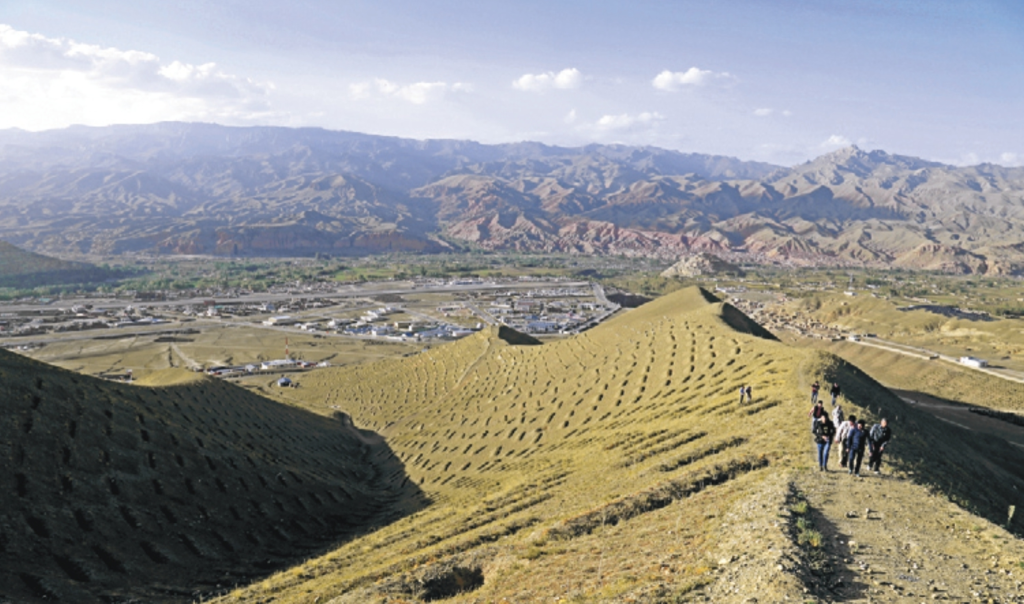
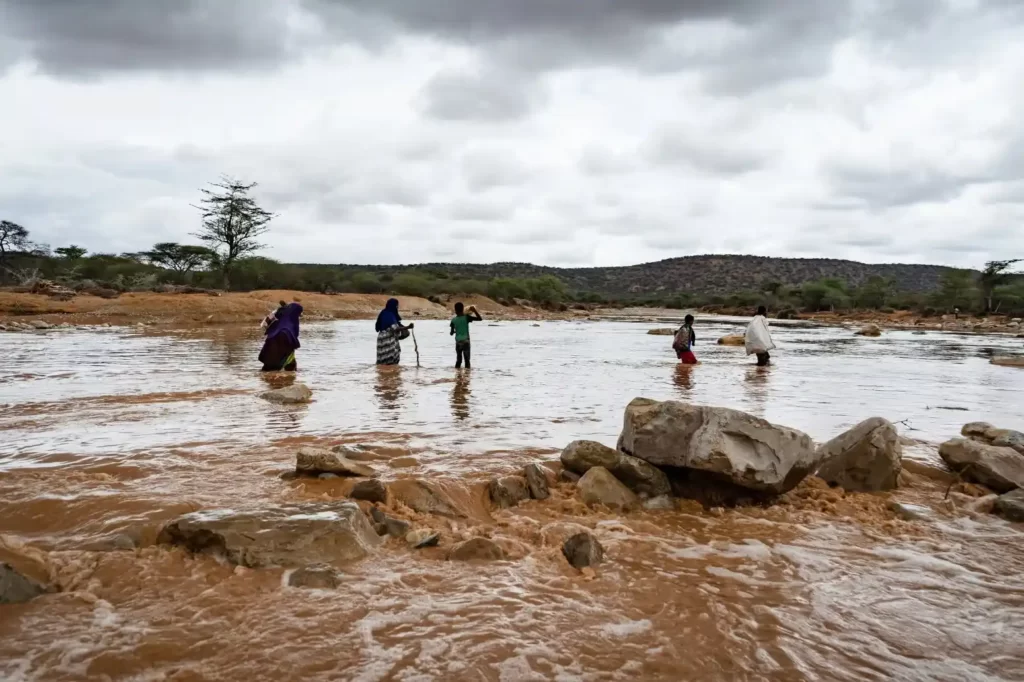

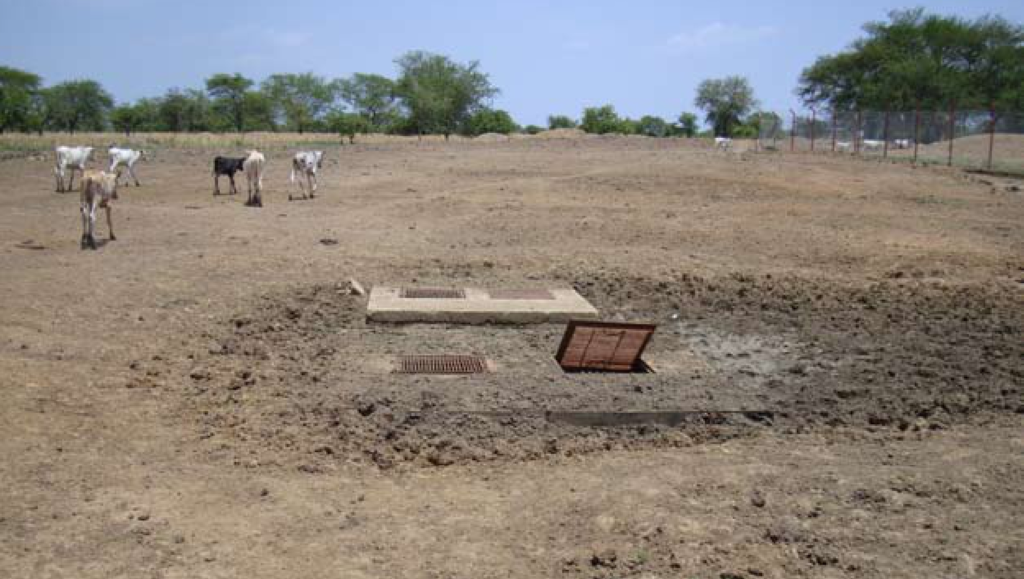
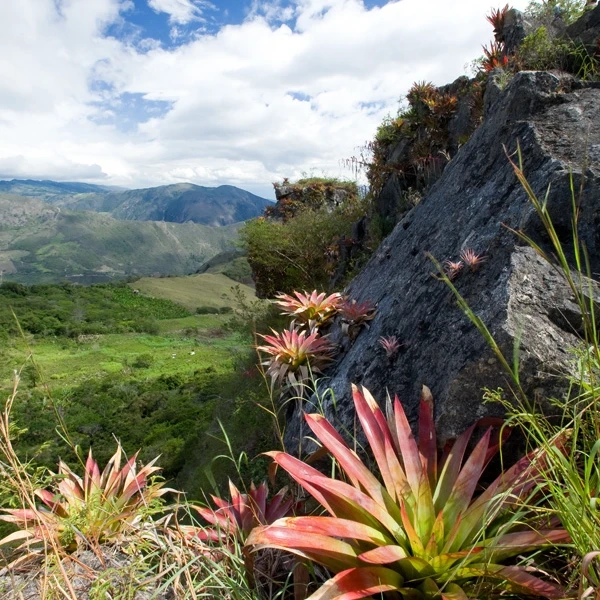
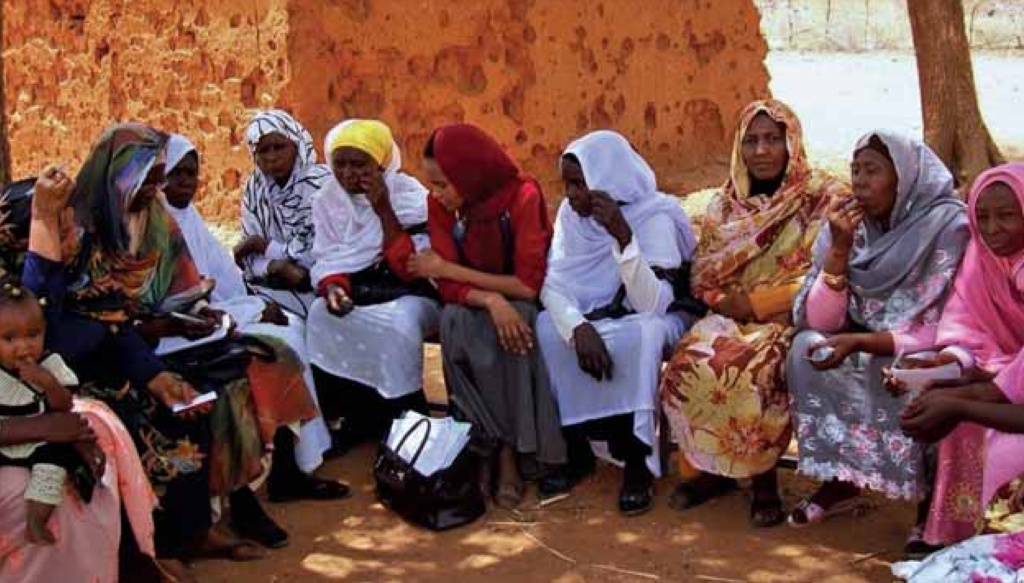
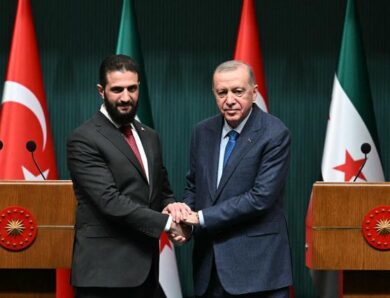


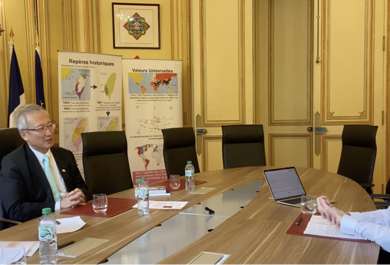
No Comment